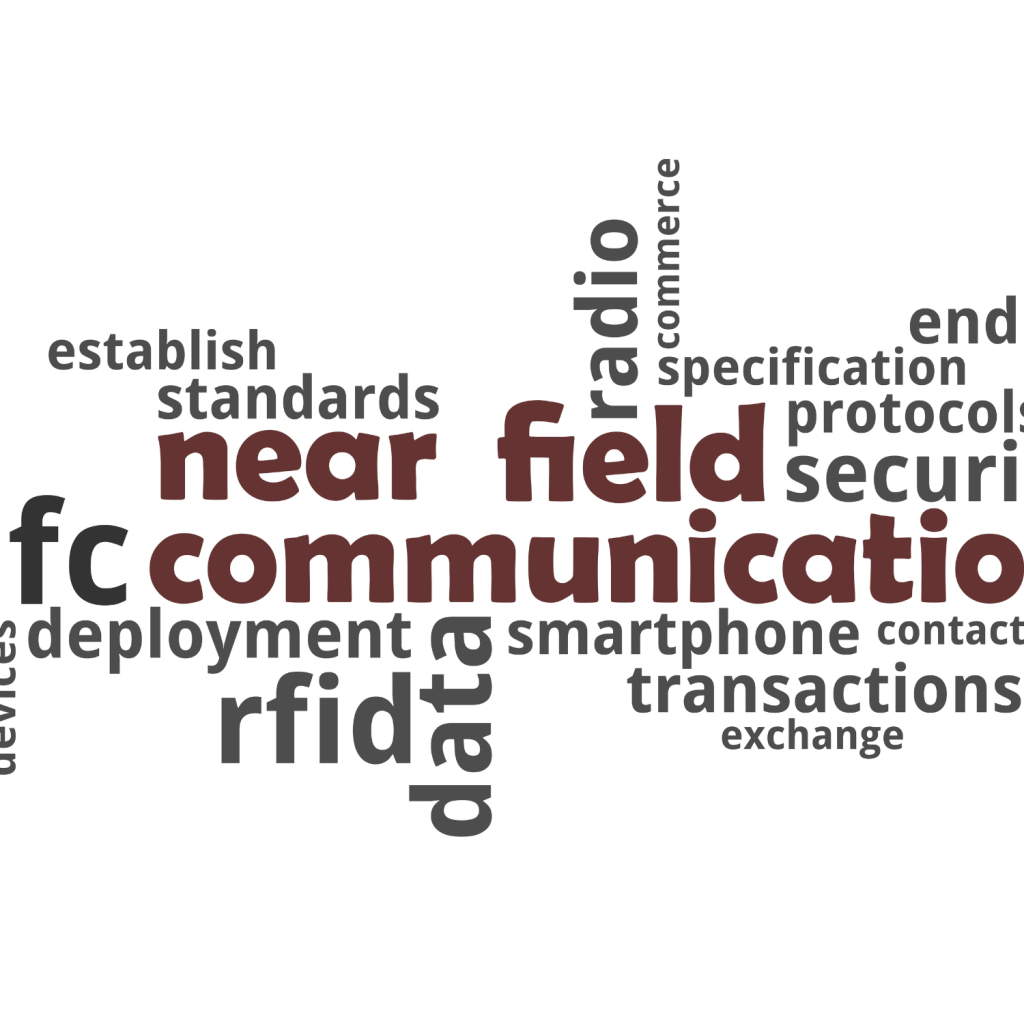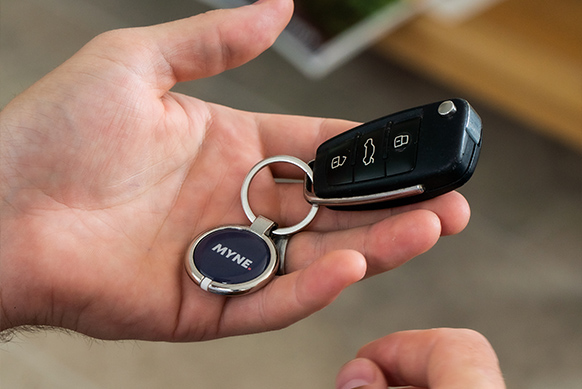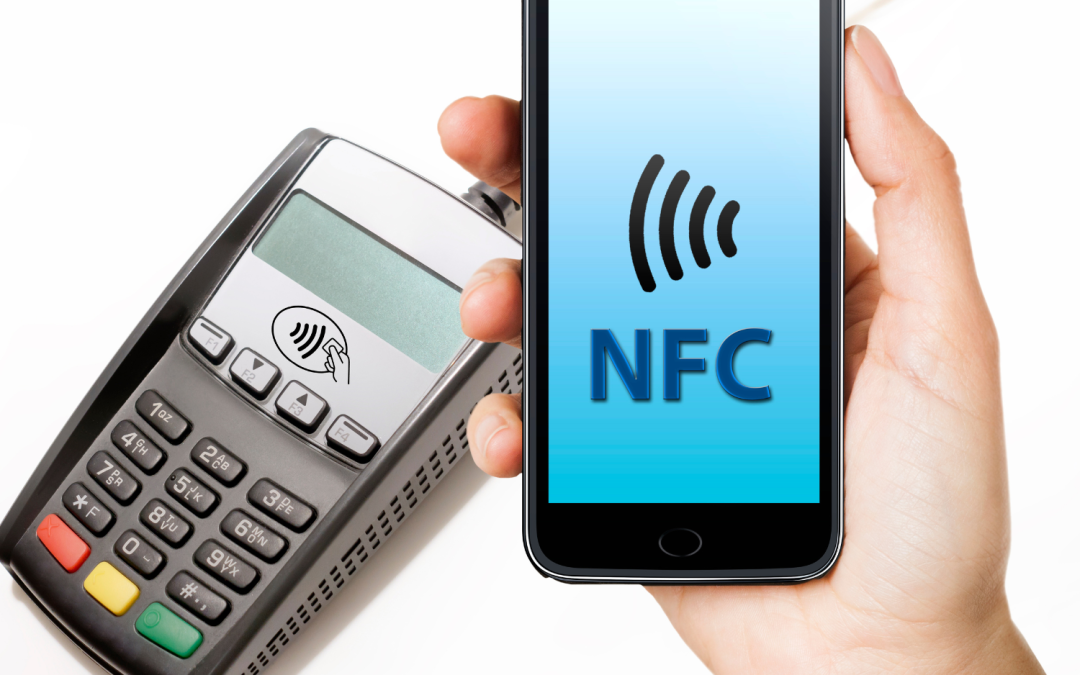Near Field Communication (NFC) is a technology that lets you pay for things, unlock doors, and transfer data between devices. It’s a lot like Wi-Fi or Bluetooth, but it’s more secure and easier to use. Here’s how it works and how it can be used in your daily life:
What is NFC (Near-Field Communication)?
NFC is a short-range wireless communication technology that allows two devices to communicate when they are in close proximity. NFC requires less power than Bluetooth, which makes it ideal for mobile payments. In addition to mobile payments and other applications, it can be used for transit tickets and various forms of identification cards.
NFC uses magnetic field induction to transfer data between devices that are within 4 inches of each other. When two compatible devices come within range of each other, their NFC antennas communicate via electromagnetic waves without ever touching each other or going through physical contact—thus allowing users to make payments or scan information without taking their phones out of their pockets or purses.
Which devices use NFC?
Near field communication allows devices to talk to each other using NFC technology by bringing them within 4cm of each other. It works with radio waves, and since it’s relatively low power it’s ideal for situations where you need to transfer small amounts of data between devices without draining your battery.
It is built into most modern phones and tablets, as well as some laptops and desktops. It’s also built into many smartwatches, TVs and game controllers. Smart home products like thermostats and lighting systems often have the chips embedded in them too; plus some printers can read NFC tags (but not write them).
So what can you do with NFC? There are lots of different applications for it, although many are more gimmicky than useful. Here are some examples of how NFC can be used in the real world:
-You can use it to pay for things. You just tap your phone against a payment terminal (or just hold it close by) and you’re done. This is what Apple Pay and Android Pay do, but there are also services like Samsung Pay which let you make payments at any credit card machine.
-You can use NFC to log into websites and apps. This is known as ‘touch ID’ or ‘fingerprint sign in’. It’s much more secure than using a password because you can’t forget it (or have someone guess it). It also means that hackers can’t get access to your account even if they steal your password from another site.
-You can use it to share files with other people. If you have an NFC-capable device, just tap it against another one and they’ll get access to whatever file you want -So what can’t you do with NFC? Well, there are some limitations. For example: -You can’t use NFC for payments if your bank hasn’t set up Apple Pay or Android Pay yet (or if they don’t support it).
-You can’t use it to pay for things if the retailer doesn’t have a terminal (or if they don’t support it).
-You can’t use it to unlock your phone if your device doesn’t have an NFC chip (or if it doesn’t support touch ID).
So, how does it work? It uses a technology called RFID which stands for Radio-Frequency Identification. This is a kind of wireless communication that uses waves to transmit data between devices.
How does NFC work? What Is RFID?

NFC works by using waves called radio waves to establish a short-range, high-frequency connection between devices. The technology is used in phones and other devices that are equipped with chips or readers.
The RFID (radio frequency identification) standard is used to transmit data from an NFC tag through radio waves to a device that’s equipped with an NFC reader.
NFC stands for near field communication, which means it uses radio frequencies close to the human body (usually 1–4 inches) instead of long distances like WiFi and Bluetooth do. As such, it doesn’t require any direct line of sight between devices—only contact is required for them to communicate via NFC form factors such as stickers or keychains placed on your phone case.
More On Near-Field Communication.
NFC is a way of exchanging data between two devices -typically smartphones. It does this by very quickly generating an electromagnetic field between the devices, which allows for two devices to communicate wirelessly. The technology used by NFC is called “Near-Field Communication Technology,” and it works because when you place your phone near another NFC-enabled device, they are close enough that they can communicate with each other using radio waves.
NFC is a short-range technology, which means it can only communicate when the devices are close enough to touch each other. You might have seen the use of NFC in movies or TV shows, where people place their phones on a table next to another device and then something happens on both screens at once. That’s because you need to hold them right up against each other for the communication process to happen.
NFC technology is used for a lot of different things, but one of the most common uses is for mobile payments. When you use your phone to pay for something at a store, it’s because that store has an NFC reader set up. You simply tap your phone on the reader and then enter in a PIN number or password (if necessary) and it processes your payment information.
NFC is also used for things like sharing files and photos between devices, which is how you can send a picture from your phone to someone else’s.
NFC is a great technology, but it’s not perfect. The biggest problem with it is that you need to be very close together for devices to communicate via NFC. If you’re holding your phone in your hand and someone else wants to send you something, then they have to hold their phone up against yours so the devices can touch each other. This takes some effort, which means that people aren’t likely to do it unless they really want something from you or if they’re trying to prank or trick someone else.
Another limitation of NFC is that it only works within a very short range. That means if you want to use it for payments, then you have to be close enough for the devices to touch each other.
What do you need for NFC to work?
Okay, so you have an NFC-enabled smartphone (if you don’t, go to Settings, tap Security and set it up). You need an NFC tag or sticker. These are little stickers that can store data and communicate with your phone. If it’s a sticker, it should have a white square on one corner of the tag.
If it’s a regular piece of paper or plastic with no markings on it then that probably won’t work!
Now place the tag against any part of your phone which has an antenna (usually near the top). This is what allows your device to read data from the chip inside the sticker. Hold this combination over an NFC reader—a machine designed specifically for reading tags—and voilà! Your phone will be able to read whatever information is stored within this tiny chip and use it as necessary.
For example, if you put the tag on your fridge and then hold it over your phone, it might be able to tell you that today is Wednesday. Or if you have a sticker on your car key fob, holding this over your device could unlock the vehicle.
Now that you know how to use an NFC tag, it’s time to get creative with what you do with it. There are tons of apps out there that can help you organize your life and make things more efficient. So whether it’s remembering where you parked your car or keeping track of your favorite recipes, these tools will make sure you never forget anything again!
NFC operates at 13.56 MHz.
NFC operates at 13.56 MHz. You can use it to transfer data between two devices or to connect a device to the internet without cables or wires. It’s the same frequency as a key fob used for car access and garage door openers, so you may have seen it before!
NFC is a high-frequency communication technology that works within about 4 inches of another NFC-enabled device (like your phone). It also has a very short range and does not have the capability of being received from further than this distance from another NFC-enabled device (like your card reader). At this point, you’re probably wondering what else you need to know about this new technology that you’ve been hearing about for months now…
NFC works by using electromagnetic induction.
Near field communication is a short-range high-frequency wireless communication technology that allows two devices to communicate when they are within 4 cm of each other. It uses electromagnetic induction to send data between the two devices. This means that you don’t need to use any cables or Wi-Fi networks and your NFC enabled device can be used almost anywhere in the world where there is cellular network coverage (provided by your service provider).
You can get an NFC tag in several different forms, such as buttons, cards, stickers and keychains.

The best part about NFC tags is that they come in a variety of shapes and sizes, so you can choose a form that’s right for your item. A tag can be attached to a keychain, placed on the back of a phone case or tacked onto clothing. The most popular types of tags include:
- Buttons
- Cards
- Stickers
- Keychains
It is possible to buy pre-programmed tags that do a variety of things when scanned by a compatible device.
You can buy pre-programmed tags that do a variety of things when scanned by a compatible device. These could be anything from linking you to information on websites or certain contact information, to coupons or discounts, to your favorite websites. You can get these tags from myne.io, the website also has information on how to set them up and use them to recover lost items.
Using tags that make use of Near Field Communication can help you keep track of your items and find them if they’re lost
If you’re a forgetful person (or if you just want to make sure that your belongings are always in the same place), NFC tags can help you keep track of your items and find them if they’re lost. You simply place an NFC tag on whatever item(s) or thing(s) you want to keep track of, then scan the tag whenever you pick up or put down an item—this way, it will always be easy for you to remember where things are. These tags can also be used to link people more quickly to information on websites or certain contact information by scanning them with compatible devices such as smartphones.
Where do I get these tags?
You can buy NFC tags online from stores like myne.io, or you can hit up your local hardware store and get them there. You might even be able to find some in the pet store. Companies like MYNE. also have suitable pet tags that can help you track your pet.
How do I get tags from them?
- Go to the “myne.io” website.
- Purchase MYNE tags from the online store.
- Create an account and add item information (click on the “setup” button on the page and follow the prompt).
- Attach a tag to your personal item
Paying for things with NFC
If you’ve been using NFC payments for a while, you may have noticed that the technology is becoming more and more popular. You might be wondering what makes it so secure and why it’s better than other forms of payment.
- NFC has become the standard for secure mobile payment technology. These payments are more secure than using a credit card or mobile wallet because they use encryption to protect your data from being stolen by hackers when it passes between devices. This protects your information from being intercepted by third parties without your permission, making it safe from hackers who want to steal personal data such as usernames and passwords from unsuspecting consumers.
- NFC payments are also much safer than contactless payment methods like Apple Pay (if used properly). This type of technology is considered less secure because it uses radio waves which means anyone with an appropriate scanner can pick up signals sent over radio frequencies with no need for authentication at all! If someone steals this data through means like eavesdropping or hacking into wireless transmissions, then they will have access to all sorts of private information about what customers buy online or offline stores where customers shop regularly.
How secure is NFC?

NFC is more secure than Bluetooth and RFID.
The NFC chip found in smartphones and other devices (apple devices, android devices) allows communication between both devices that are within a few centimeters of each other. It uses the 13.56 MHz frequency, which is relatively far away from the frequencies used by common wireless networks, such as 2.4 GHz (WiFi) or 5 GHz (WiMax). As a result, it’s much more difficult for hackers to intercept data transferred by NFC tags than it would be with more commonly used connections like Wi-Fi and Bluetooth.
The chip itself is not encrypted, but data transmitted between the devices using it is. This means that hackers would need to intercept both the communication between the phone and tag and also crack any encryption used by the system. That’s a lot harder than simply reading data from an RFID tag.
In addition, NFC chips have a limited range. They can transfer data only when the devices like smartphones are within a few centimeters of each other. This means that hackers would need to be physically close enough to intercept any data transmitted between your phone and tag.
The two most common uses for NFC are mobile payments and communication between devices. It’s possible to use your phone as a wallet, storing your debit card information on it so that you can make purchases at any store with an NFC-enabled payment terminal.
The same technology is used for wireless data transfer, as well. You can send files between two NFC-enabled devices by tapping them together or logging into websites that support them.
Other uses for NFC
NFC is used in many different industries, including the medical industry, automotive industry, retail industry and banking industry. It’s also used for home automation and biometrics authentication. NFC has applications online and digitally as well as in transportation. NFC is also used in entertainment venues like events or concerts where people have their smartphones on them but don’t have wallets with cash or credit cards to pay for tickets (or food).
NFC can be used by parents who want to track their children’s whereabouts using an app. It can be used by people who want to unlock doors with their phones rather than remembering keys or entering a pin number into an electronic keypad at the door handle (or paying someone else for access). People use it for payments via phone so they don’t need to carry cash on them anymore; this includes making payments at restaurants and stores where there are contactless payment options available like Apple Pay® or Android Pay™ which use these NFC chips inside phones connected through WiFi signals from cell towers nearby (and not Bluetooth connections like some other devices do).
NFC isn’t just a technology that can help you pay for things. It has many other uses, too. The most important thing about NFC is that you can use it to make your life easier and more convenient. You might even find yourself using NFC without even realizing it!

